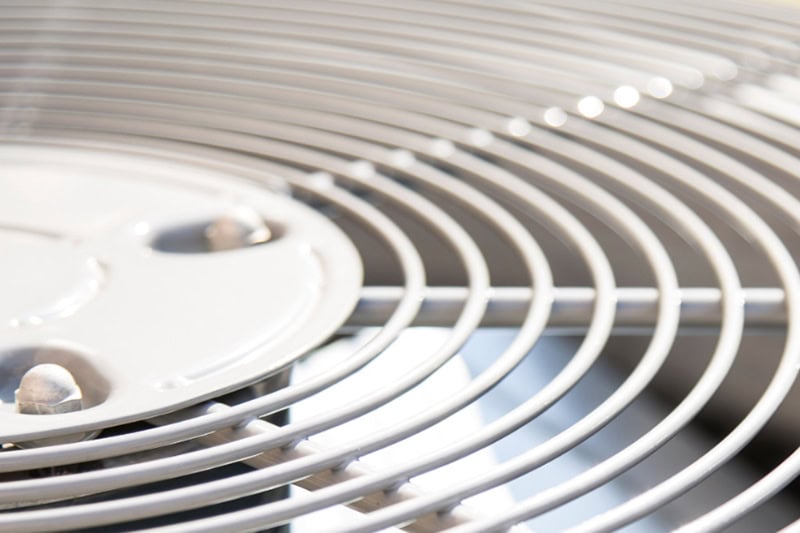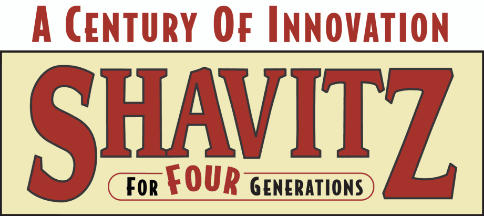A Guide of Commonly Asked Questions About Refrigerants in 2025

In the world of HVAC, change is constant, and 2025 marks a significant shift in refrigerant standards.
With the transition to A2L refrigerants and the phasedown of R-410A, the industry is abuzz with questions, concerns, and opportunities.
With changes come questions, and Shavitz Heating and Air Conditioning has the answers for residents of Skokie, IL, and all the surrounding areas. In this comprehensive guide, we will cover the following:
- General Information About the Refrigerant Changes in 2025
- What the new refrigerant laws mean to homeowners
- What the new refrigerant laws mean to the HVAC industry
- What is A2L Refrigerant?
- Homeowner FAQs About the Refrigerant Changes
- HVAC Professional FAQs About the Refrigerant Changes
I. General Information About the Refrigerant Changes in 2025
The US Environmental Protection Agency (EPA) is gearing up to enforce a shift to a new refrigerant type for all new air conditioning systems and heat pumps in 2025. This regulation was announced in 2020, and the imposed deadlines for converting are approaching.
Currently, most air conditioning systems rely on hydrofluorocarbons (HFC) and hydrochlorofluorocarbons (HCFC) as the refrigerant, like R-410A, but these soon-to-be guidelines will require A2L refrigerants instead.
Some manufacturers have already changed or started a product line with an A2L refrigerant.
The EPA has indicated a desired transition date of January 1, 2025; however, actual sell-through dates for existing equipment using R-410A or other HFC refrigerant will vary by region, product, and inventory.
II. What the new refrigerant laws mean to homeowners
Homeowners, for the most part, do not have to be concerned about these EPA changes to the refrigerant. Replacement parts for R-410A air conditioning and heat pumps will still be eligible for repair services under this new EPA regulation, and parts are expected to be available for the life of existing systems.
HVAC systems, on average, can last 15 to 20 years if well cared for, though ENERGY STAR® recommends starting to plan the replacement of your existing HVAC system after 10 to 12 years to take advantage of more energy-efficient models.
The phasing out of R-410A refrigerant production may increase the cost of repairs over the coming decade as R-410A replacement parts become harder to find. However, you will also pay more upfront if you buy equipment with the new refrigerant.
Suppose your current HVAC system is nearing its end of life or is over 10 years old. To avoid paying higher costs for a new system, you will want to replace your equipment before January 1, 2025.
If you do get the next generation of refrigerant, your new system will operate as expected; refrigerant changes will not affect your comfort or the efficiency of your equipment.
III. What the new refrigerant laws mean to the HVAC industry
The new refrigerant laws herald a pivotal moment for the HVAC industry, compelling it to embrace eco-friendly practices. With increasing awareness of environmental concerns, industry efforts are shifting towards developing and implementing more sustainable solutions.
However, this transition isn’t without its challenges. HVAC technicians now face the task of adapting to these new refrigerants, which have a different composition and pose unique safety considerations.
As a result, there’s a pressing need for comprehensive training programs to educate technicians on handling, servicing, and installing these new refrigerants safely.
IV. What is A2L Refrigerant?
A2L refrigerants are designed to have lower global warming potential (GWP) than traditional refrigerants like hydrofluorocarbons (HFCs). Their SEER2 ratings are estimated to be similar to those of their predecessors.
Let’s delve deeper into the components:
- Hydrofluoroolefins (HFOs): These are organic compounds comprising hydrogen, fluorine, and carbon atoms. They don’t stay in the atmosphere for long periods, thus reducing their contribution to ozone depletion and low GWP rating.
- Blends of HFCs and HFOs: Some A2L refrigerants are formulated as blends of HFCs and HFOs. This blending allows for optimizing performance while still significantly reducing GWP. These blends will be more prevalent in new HVAC equipment.
Common A2L refrigerants include the following. You may see these R-coded terms used in place of A2L on your HVAC products.
- Pure HFOs (such as R-1234yf and R-1234ze)
- HFC/HFO blends (such as R-452B and R-454B)
- Some Pure HFCs (such as R-32)
A2L refrigerants offer a balance between efficient cooling performance and reduced environmental impact, aligning with global efforts to mitigate climate change by phasing out high-GWP refrigerants.
V. Homeowner FAQs About the Refrigerant Changes
We have been monitoring these changes and are here to answer some of the more frequently asked questions about refrigerants:
- Will my current HVAC be mandated to be replaced if it uses the old refrigerant types?
No. The coming refrigerant transition applies to the manufacturing of new HVAC systems.
If your HVAC system is on the fritz or you have been considering upgrading your air conditioning system, several major brands already have compliant equipment with more product options on the way. - Will my system that uses R-410A be eligible for repairs under these new EPA rules?
Yes! Replacement parts will remain available for all existing R-410A equipment while supplies last. These units will also still be eligible for routine maintenance services. - I’ve heard that A2L refrigerants are flammable. Is this true, and should I be concerned?
A2L refrigerants are mildly flammable. However, they are extremely hard to ignite.
Experiments involving A2Ls and a range of heat sources such as cigarettes, lighters, and various household appliances have been conducted, revealing no instances of ignition caused by any of these heat sources.
- After the transition on January 1, 2025, if my R-410A evaporator coil leaks, can it be replaced, or will I have to purchase and install a whole new system?
Even for specific scenarios like this, replacement parts will still be available after the expected transition date. The EPA is allowing replacement parts containing R-410A to be sold for air conditioning repair.
As R-410A is phased out, however, the inventory for these replacement parts will shrink as the years pass, and the parts will be used to repair older models. - Can R-454B or another A2L refrigerant be used instead of R-410A if my system has a leak?
While there are similarities between the two refrigerant types, they are not interchangeable. - Can my existing R-410A condensing equipment have its coils replaced with the new A2L refrigerant coil or Thermal Expansion Valves (TXV)?
Coils for furnace systems are not interchangeable; you will need to repair them with the appropriate parts.
As for condensing units, the refrigerant used in the indoor coil (whether A2L or R-410A) must match the refrigerant used in the outdoor unit. There are replacement coils for systems using either type of refrigerant, so you can repair your unit as needed—you just can’t have mismatched refrigerants. - If I’m replacing a split AC system with one with an A2L refrigerant, do I need to replace my existing gas furnace, or will I need special components to make it compatible?
No, you won’t need to replace your gas furnace or need special components. - My AC will need to be replaced in the next few years. Should I have it replaced now?
Systems using R-410A are still available for sale and will be until the end of the year, and versions using R-454B are already available for those who wish to switch to a more eco-friendly product.
VI. HVAC Professional FAQs About the New Refrigerant Changes
Homeowners are not the only individuals with questions. Changes in equipment can mean changes in training, tools, and handling.
- Which A2L refrigerant will most AC manufacturers use?
One of the more common A2L refrigerants that will be used throughout the industry is R-454B. - Can I substitute R-410A with R-454B?
No. While the pressures and temperatures of the two refrigerants may be similar, the compressor and expansion devices are incompatible with different refrigerants. - Will the new equipment being manufactured for this change have leak detection systems?
Yes, a leak detection system will be installed on fan coils. - Is it possible to retrofit an existing R-410A equipment with A2L refrigerant equipment?
When it comes to HVAC systems, coils are not interchangeable.
Concerning condensing units, it’s crucial that the refrigerant type in the indoor coil (whether A2L or R-410A) aligns with that used in the outdoor unit. Fortunately, replacement coils are currently available for both refrigerant types, allowing you to maintain and repair a customer’s unit as necessary. - Will the new A2L refrigerant equipment come charged or dry?
The new equipment will come charged. - What is the operating pressure of R-454B?
The operating pressures of the new refrigerant are slightly less than that of R-410A. - If R-454B and other A2Ls are flammable, how should repairs be undertaken when there’s residual refrigerant left in the unit?
A2Ls are mildly flammable and not explosive, so the chance of a fire hazard is extremely low. Proper safety procedures involve reclaiming the refrigerant before service. - What’s the recommended storage method for multiple containers of R-454B in an unconditioned warehouse?
Regulations currently permit storing up to 20,000 pounds of refrigerant in a single control area without sprinklers. Additional control areas can be established through fire-rated walls or by installing a sprinkler system. - What tools and procedures are essential when dealing with R-454B?
Spark-proof electronic tools are mandatory, saturation temperature visual aids should be up-to-date, and an inverted thread adaptor is necessary for refrigerant cylinders. Best practice procedures for R-410A equipment are applicable. - How long before R-410A is phased out entirely?
The EPA transition date for using R-454B is January 1, 2025; however, sell-through dates of existing equipment may vary.
Contact Shavitz Heating and Air Conditioning for all HVAC Needs and Questions
The transition to A2L refrigerants like R-454B heralds a new era in the HVAC industry and brings myriad questions and considerations. If you have a question not listed here, don’t hesitate to call us at 847-861-5559 or request service online.
If you want to replace your old one before the new refrigerant mandates take effect, you can also request a free quote on a new system. By addressing these concerns and providing clarity on installation, maintenance, and safety protocols, Shavitz Heating and Air Conditioning can help Skokie, IL, homeowners navigate this transition with confidence.

